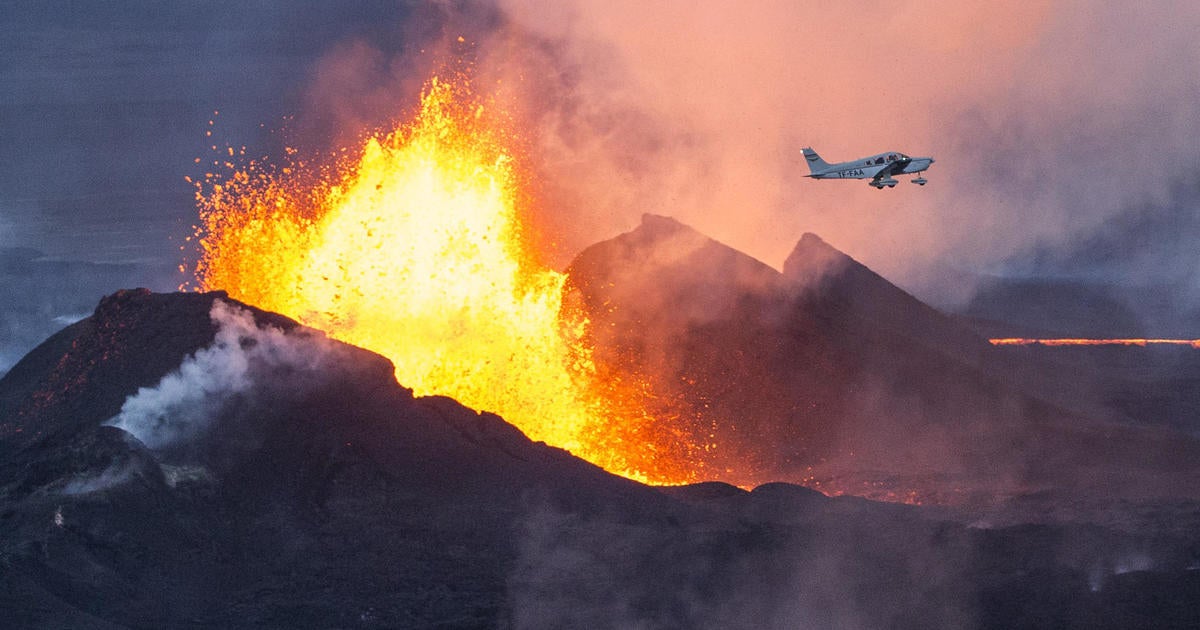Unraveling Nature’s Warning: Is Iceland’s Volcano on the Brink of Eruption?
In recent weeks, Iceland has found itself at the center of growing scientific attention due to a series of seismic activities that have sparked concerns over potential volcanic eruptions. With over 130 earthquakes recorded in a short span beneath one of Iceland’s massive volcanoes, experts are now analyzing whether these tremors could herald an impending eruption. This article aims to unravel the complexities surrounding this natural phenomenon, investigating the implications for the region and the broader geological context.
Understanding Iceland’s Volcanic Landscape
Iceland is famously known as the land of fire and ice, a unique geological setting that boasts numerous volcanoes and geothermal activity due to its location on the Mid-Atlantic Ridge. This ridge is a divergent boundary where the North American and Eurasian tectonic plates are moving apart, leading to frequent volcanic eruptions and earthquakes. The last decade has shown Iceland’s volcanic activity can be both spectacular and disruptive, making the recent seismic events a topic of significant concern.
Recent Seismic Activity: What’s Happening?
The recent seismic events beneath the volcano, identified as Þorbjörn, have raised alarms among scientists and residents alike. The earthquakes, varying in magnitude, suggest that magma may be moving within the Earth’s crust, a key indicator that an eruption could be on the horizon. The Icelandic Meteorological Office has been closely monitoring these events, providing timely updates and analyses.
Some of the notable points regarding the recent activity include:
- Magnitude and Frequency: The earthquakes have been recorded with increasing frequency, peaking at over 130 events in a matter of days. The magnitude of these tremors has ranged from small to moderate, indicating a potential buildup of pressure.
- Depth of Activity: Most of the earthquakes have occurred at relatively shallow depths, which is often a precursor to volcanic eruptions as magma moves closer to the surface.
- Historical Context: The volcano has a history of eruptions, with the last significant activity occurring in the late 20th century. This historical pattern adds weight to the concerns raised by the recent seismic activity.
Could This Signal an Impending Eruption?
Experts are divided on whether this seismic activity definitively indicates an imminent eruption. Some geologists argue that while the signs are concerning, not all volcanic unrest leads to eruptions. In fact, many volcanoes exhibit increased seismic activity without resulting in an eruption. However, the unique geological setting of Iceland means that vigilance is essential.
Dr. Anna Björnsdóttir, a leading volcanologist at the University of Iceland, emphasizes the need for continuous monitoring. “We’ve seen this kind of activity before, and while it can lead to eruptions, it can also subside without any explosive events. We need to analyze the data carefully and keep the public informed,” she stated in a recent briefing.
The Impact of an Eruption on Iceland and Beyond
Should an eruption occur, the implications could be significant. Iceland’s economy is heavily reliant on tourism, and a volcanic eruption could disrupt travel plans and affect local businesses. Moreover, previous eruptions have shown that ash clouds can travel vast distances, impacting air travel across Europe and beyond.
- Tourism: Iceland’s stunning landscapes attract millions of tourists each year. An eruption could not only deter visitors but also pose safety risks.
- Agriculture: Volcanic ash can enrich soil, but it can also harm crops if the eruption is explosive and widespread.
- Air Travel: The 2010 Eyjafjallajökull eruption serves as a stark reminder of how volcanic ash clouds can disrupt international air travel for extended periods.
Preparedness and Public Safety Measures
In light of the recent seismic activity, Icelandic authorities have been proactive in preparing for any potential eruption. The government has implemented several measures to ensure public safety, including:
- Evacuation Plans: Local communities near the volcano have been informed of evacuation routes and procedures should the need arise.
- Information Dissemination: The Icelandic Meteorological Office has ramped up communications to keep residents and tourists informed about the volcanic activity and safety measures.
- Research Funding: Increased funding for volcano monitoring and research is being allocated to better understand the signs leading up to an eruption.
The Broader Geological Perspective
This situation in Iceland is not only relevant to Icelanders but speaks to broader geological patterns observed worldwide. Volcanic eruptions can have far-reaching effects on climate and ecosystems, influencing weather patterns and natural habitats. Understanding these phenomena helps scientists predict and mitigate the impacts of future eruptions in various regions.
Geological research suggests that the more we learn about volcanic systems, the better equipped we become to handle natural disasters. Continuous monitoring and community engagement are crucial for minimizing risks associated with volcanic eruptions.
Conclusion: A Call for Vigilance and Optimism
As we continue to monitor the seismic activity beneath Iceland’s volcano, it’s important to approach the situation with both caution and optimism. While the signs may indicate potential unrest, history shows us that not all seismic activity leads to eruptions. The resilience of the Icelandic people, combined with modern science and preparedness, will play a vital role in navigating any challenges that may arise.
In the face of nature’s warnings, staying informed and prepared is our best response. As we unravel the mysteries of volcanic activity, let us embrace the knowledge gained and foster a spirit of solidarity as we navigate these geological wonders together.
See more Your Daily Weather



